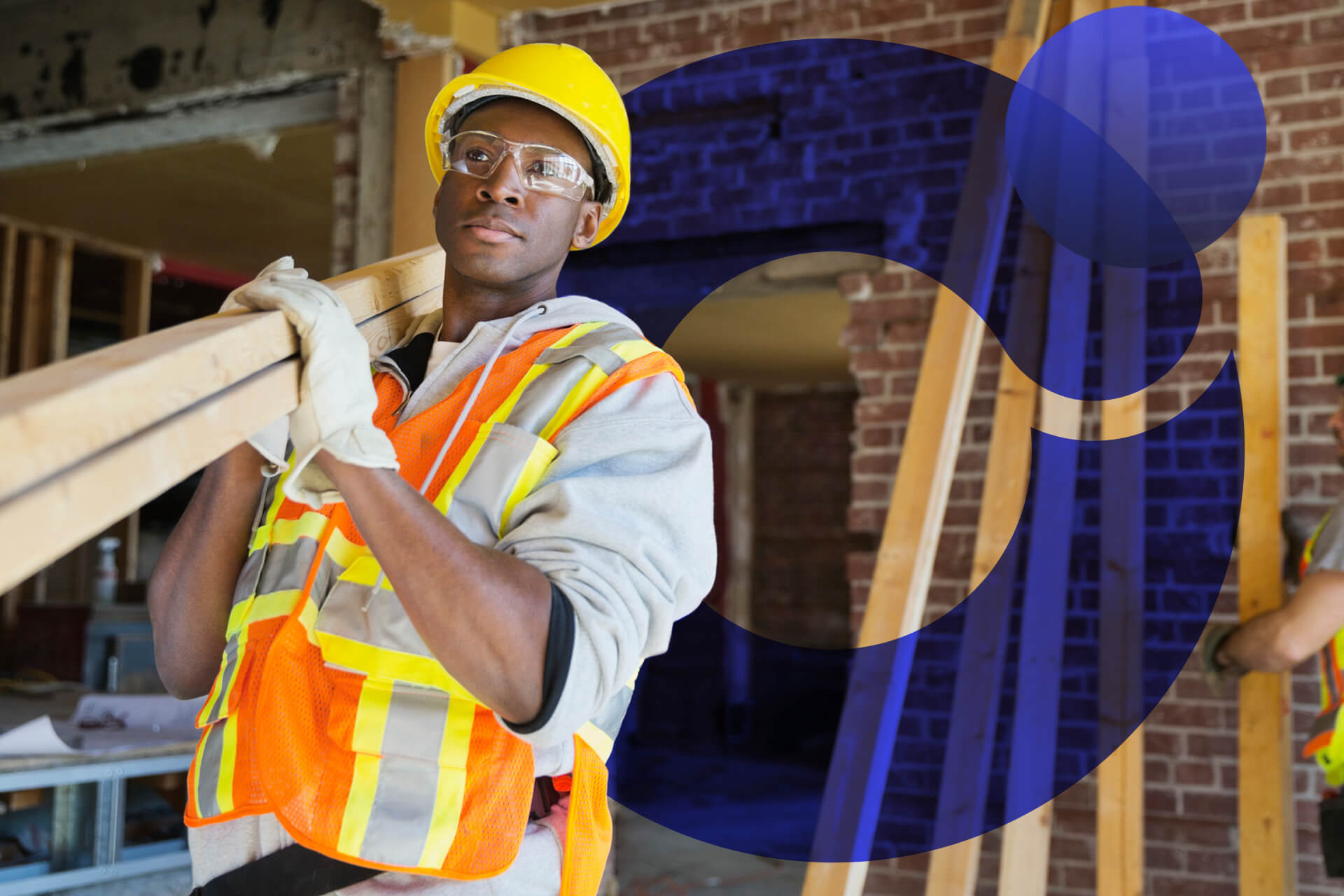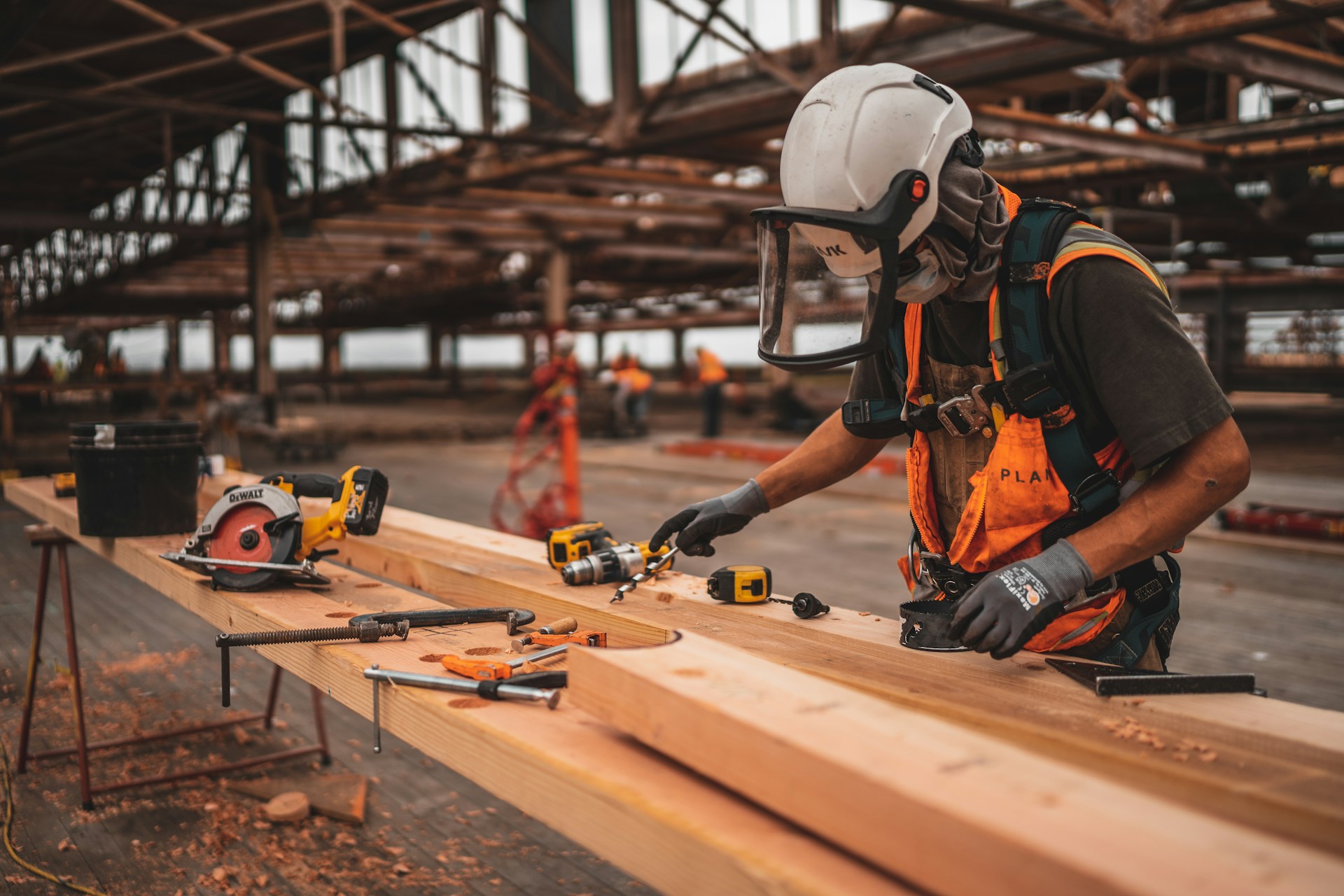
6 Hazards in Construction and How to Avoid Them
January 16, 2020 - Emily Newton
Revolutionized is reader-supported. When you buy through links on our site, we may earn an affiliate commission. Learn more here.
Construction is one of the largest industries in America, generating about $12.5 billion in yearly revenue. Projects often involve thousands of hours of work, tools, materials and personnel. However, despite the lucrative nature of the business, hazards in construction are imminent and an ever-present threat to both laborers and sensitive project timelines. Last year, one in every five worker deaths was in this industry, totaling more than 1,000 casualties. Unsurprisingly, there are even more cases of injury. Fortunately, managers and personnel can avoid most accidents, injuries and deaths with proper training, equipment and regulations. There are several prevalent hazards in construction, but also ways to prevent and avoid them.
1. Falls
Falls account for 33.5% of construction deaths both inside and outside of buildings. Factors like poor weather, slippery conditions, negligence, and unstable scaffolding and ladders are often to blame for these casualties and many more injuries. In fact, fall protection, ladder, scaffolding and training requirement violations were some of the most frequently cited by the Occupational Safety and Health Administration in 2018. By meeting proper safety standards, these incidents could be prevented, especially when working at heights.
To meet OSHA standards and proper safety requirements, employees should have access to hard hats, nonslip footwear and fitted uniforms. Scaffolding should also be sound, rigid and able to carry its own weight, plus four times the maximum intended load. Suspension scaffold rigging must support at least six times the intended weight. Someone must also train workers involved in erecting, disassembling, operating, repairing, maintaining and inspecting scaffolding to effectively recognize and avoid hazards.
2. Electrocution
Electricity by itself is a dangerous force, but electrical hazards aren’t always obvious in construction sites. Most project personnel are exposed to frayed cords, wires, underground or overhead cables, and electrical equipment daily. Lack of coordination and untrained workers also increase the risk of electrocution on construction sites.
While these electrical hazards may not always be completely avoidable, there are precautions workers can take to protect themselves and lower their risk of electrocution. Before beginning a project, managers should communicate the location of all live conductors to employees. Additionally, they should train their workforce on how to safely operate ground tools and portable equipment with ground-fault circuit interrupters to prevent accidents.
3. Hazardous Materials
Construction sites are wrought with dangerous chemicals and hazardous materials. From power tools to airborne toxins, the odds of physical injury and poisoning are relatively high. Chemical spills can cause severe burns and release fumes that irritate the respiratory system. Pesticides, paints, acids, solvents and other solutions can cause allergic reactions, illness and skin irritation.
To ensure chemical safety on project sites, information about the identity and potential hazards of chemicals must be available and understandable to employees, per OSHA requirements. All chemicals must be labeled, and exposed workers should be provided with safety data sheets detailing risks and proper handling techniques.
Construction sites must also comply with OSHA’s enforceable permissible exposure limits to protect workers against the repercussions of hazardous materials, including airborne concentrations of chemicals.
4. Repetitive Strain
Roughly 60% of employees who perform repetitive on-the-job construction work have musculoskeletal disorders. These are often difficult to detect because the physical strain put on the body can go unnoticed for days, weeks or even months before an employee experiences pain. Frequent lifting, improper handling methods, excessive exposure to vibration, and repetitive pushing and pulling can all result in strain-related injuries and musculoskeletal disorders.
One way to prevent this form of injury is to limit the use of hammer action tools to an hour or less a day. Another way to reduce the risk of injury is to limit the use of some rotary or other equipment to less than four hours per day. Employees should know how to properly handle machinery and power tools and how to safely lift, push and pull heavy objects. Project managers should also rotate workers where devices require continual or frequent use.
5. Caught in-Between
Caught-in-between accidents involve a worker being caught, crushed, compressed or squeezed between equipment, walls, building materials or heavy machinery. These hazards in construction usually occur during trenching, which accounts for hundreds of injuries every year. Trenches, which are typically 5 feet or deeper, are especially hazardous because they can cave in and trap workers if the walls are not properly supported. They may also collapse if workers dig too close to utilities or buildings.
To prevent caught-in-between accidents and fatalities, workers must properly create stable trenches with the proper slope to avoid collapse. Shoring trenches and utilizing trench boxes can also protect workers from injury. Personnel should be trained in soil classifications and protective systems, so they can help prevent accidents while work is ongoing.
6. Being Struck by Objects
Heavy materials and machinery are a daily part of a construction worker’s life. So, it’s no surprise that the second-leading cause of private-sector worker deaths is being struck by one of these objects. The main culprit of these accidents is vehicles, such as forklifts and cranes. Improper use of these industrial vehicles results in tens of thousands of injuries annually. However, workers can avoid most of these accidents with proper training and protective gear.
Employees should check crane and forklift controls before operating the vehicle and be aware of their surroundings so as not to drop or hit co-workers with moving objects. The weight of a load should never exceed the machine’s capacity. Additionally, all workers should wear proper eye- and headgear to avoid injury by falling objects, tipping vehicles or other mishaps.
With Great Power Comes Great Responsibility
Construction project managers and their employees work with heavy-duty machinery, materials and chemicals every day. These powerful substances and tools can spell injury or death for those who don’t know how to properly handle them or follow precautionary regulations. Thus, laborers in the construction industry have the responsibility of staying informed and alert.
Project managers can take responsibility for training their employees and ensuring they have the proper equipment, time and resources to complete the job. They should also strive to keep an open line of communication between themselves and their workers. By regularly checking in on team members and asking for input, project managers can improve safety and protocol.
Workers should also take responsibility for their actions and the ensuing consequences. By following OSHA standards, practicing caution and wearing proper gear, employees can create a safer, more productive environment for everyone.
Revolutionized is reader-supported. When you buy through links on our site, we may earn an affiliate commission. Learn more here.
Author
Emily Newton
Emily Newton is a technology and industrial journalist and the Editor in Chief of Revolutionized. She manages the sites publishing schedule, SEO optimization and content strategy. Emily enjoys writing and researching articles about how technology is changing every industry. When she isn't working, Emily enjoys playing video games or curling up with a good book.






